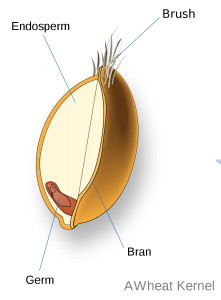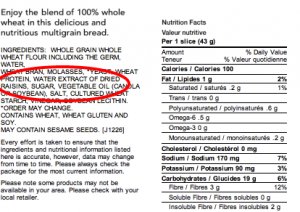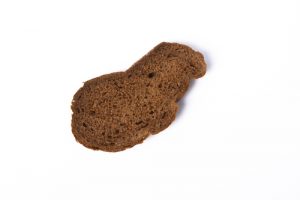Living in 2017, buying bread could be very confusing! I know that white bread isn’t the healthiest choice for my family, so I can spend half an hour at the bread isle in the grocery store, just trying to figure out which “non-white” option is the best (there are just too many options!).
As a dietitian, the regular bread in my house is “whole grain” bread, and I am being specific: whole GRAIN (not whole WHEAT). Ever noticed the difference? I know… they look very similar!
Whole grain products are known to benefit us because they help reduce the risk of chronic diseases such as diabetes, heart disease and some cancers. The added bonus is that they also help with weight management.The challenge is to find products that are TRULY whole grain. Unfortunately, a lot of products are labelled to market them to consumers, which often leads to confusion.
First, let’s look at commonly used terms on bread products and understand what they mean:
- Whole grain – this is the most wholesome option as it includes all parts of the kernel of the grain (i.e. bran, endosperm and germ)
- Whole wheat – most often confused with whole grain, whole wheat flour is different as it has part of the kernel removed (e.g. the germ and some of the bran)
- Multigrain – as the name suggests, this means that the bread has more than one type of grain (i.e. wheat, barley, flax, oat rice, corn, etc.)
- Enriched – this is either white or whole wheat bread that has vitamins and minerals added to it in a refining process.

As mentioned, whole grains are my number one choice because they are higher in fibre and have more nutrients (i.e. vitamins, minerals and phytonutrients). Of course, the term “whole grain” could be indicated on food packages that don’t necessarily contain whole grain products! So here are a few points to take into consideration when purchasing so called “whole grain” products:
- Look at the ingredients list to find “whole grain” early on the list, confirming that the product is actually made

Look for the term “whole grain” on the ingredients list. with whole grains.
- Note that claiming a product is “made with whole grains” doesn’t always mean that the product contains whole grains – again, review the ingredients.
- Don’t fall for “fibre” claims! Food producers may add fibre to bread, which may not be as beneficial as the fibre naturally found in whole grains.
- All whole grains aren’t the same! Read the nutrition information label and choose the brand that is higher in fibre (at least 3 grams), less sodium, less sugar and more protein.
Bottom line, if you want to choose a healthier bread look for “whole grain” on the ingredients list. If this is not an option, choose whole wheat products that have a higher fibre content. Try to enjoy white bread as a treat rather than a regular part of your diet; white bread is made with refined flour, which means it has lots of vitamins and minerals added to it (looks like a very health option when you read its label!) but is missing the fibre and the benefits of whole grains.
References:
Eat Right Ontario – Choosing Whole Grains FAQs. (2016, October 31). Retrieved January 26, 2017, from https://www.eatrightontario.ca/en/Articles/Canada-s-Food-Guide/Choosing-Whole-Grains-FAQs.aspx
Park, A. (2017, January 23). Whole Grains: What You Need to Know | Time.com. Retrieved January 26, 2017, from http://time.com/4639314/the-case-against-whole-wheat-and-whole-grain-bread/

One thought on “Choose whole grain bread!”